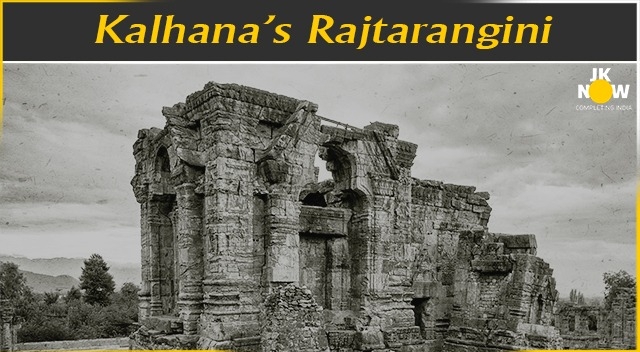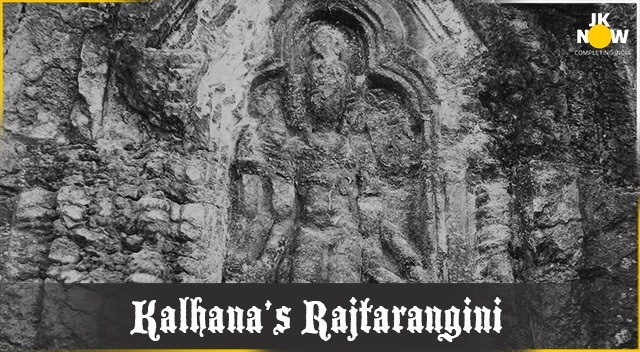Prof. Sibesh Bhattacharya rightly observes when he says that in Indian context, “Itihāsa-Purāṇa are narratives of the past, but they are not factual narratives in the modern sense; they are exemplification of puruṣārtha vidyās. And purusartha vidyas stood for a comprehensive plan of human life.”
There are ample materials which show that early India has a sense of past, then how the notion that India has no sense of history is surfaced? It seems that Alberuni (1030 A.D.) who travelled to India, had tried his best to set the notion when he says that “Unfortunately the Indians do not pay much attention to the historical order of things, they are very careless in relating the chronological succession of their kings, and when they are pressed for information they are at a loss, not knowing what to say, they invariably take to tale-telling. But for this we should communicate to the reader the traditions, which we have received from some people among them.”- Alberuni’s India: an account of the religion, philosophy, literature, geography, chronology, astronomy, customs, laws and astrology of India about 1030 A.D. Volume II, pp-10-11
In fact, such notions about sense of history created by Alberuni are not true. Indian traditions tell a quite different story. It is the need of the time to re-visit these issues and rectify.
In this series, we are going to interpret the history of Kashmir through Kalhaṇa’s Rājataraṅgiṇī – the oldest and fullest record of the region. Kalhaṇa’s Rājataraṅgiṇī is the first text which comes very close to character of western historical text. Kalhana himself informs that he has written his text in 1148-49 C.E. Kalhaṇa in his Rājataraṅgiṇī outlines the history of Kashmir from the earliest time down to his own time through the various kings. Exploring the text, we could easily observe that Kalhaṇa followed three-step methodology for history writing. First of all, for earliest history he followed the oral traditions/legends popular in the region; then the written records by his predecessors, and finally his own experience as being witness. It is also necessary to look the history of the text, i.e. how the critical edition of the text based on various manuscripts has been prepared over the time.

• In 1823, William Moorcroft visited Kashmir and obtained a devanāgrī transcript of the Rājataraṅgiṇī which was prepared from an old Śāradā manuscript which proved later, the codex archetypes of all extant Kashmirian manuscripts of the Rājataraṅgiṇī. In this devanāgarī transcript, a versified colophon is attached which clearly says that the original manuscript from which the Annals of the Kings of Kashmir were copied had been obtained from the learned Kashmiri Paṇḍita Śivarāma. The family of Śivarāma which alone in Kashmir had always preserved a copy of the Rājataraṅgiṇī.
• H. H. Wilson in 1825 provided an abstract of the first six chapters of the Rājataraṅgiṇī on the basis of three incomplete devanāgarī manuscripts.
• In 1835, Bengal Asiatic Society had prepared the editio princeps of the Rājataraṅgiṇī which was based on Moorcroft’s devanāgarī transcript which was prepared from an old Kashmirian manuscripts. Unfortunately, this editio princeps contains a lot of discrepancies, mistakes and consequently a corrupt text.
• In 1840, with the help of Bengal Asiatic Society editio princeps, A. Troyer, a French scholar and then Principal of the Calcutta Sanskrit College began to publish a new edition of the Rājataraṅgiṇī and also its French translation. However, Troyer’s edition could not go beyond six chapters and its French translation was completed in 1852 A.D.
• In 1875, Prof. G. Buhler visited Kashmir in search of Sanskrit manuscripts. In his report entitled “Detailed Report of a tour in search of Sanskrit MSS in Kashmir”, he categorically mentioned the superiority of Kashmirian Śāradā manuscripts over the devanāgarī transcripts of the Rājataraṅgiṇī. He also ascertained that all the Kashmirian manuscripts are derived from the single Śāradā manuscript of the Rājataraṅgiṇī which was the codex archetypus. At his time, the codex archetypus was in possession of Paṇḍita Keśavarāma, the grandson of Paṇḍita Śivarāma. He was fortunate to have only a glimpse of this codex archetypus. Consequently, he showed the way how to reconstruct the genuine text. In his appendix II of his detailed report, Buhler provided the translation of verses 1-107 of the first chapter of the Rājataraṅgiṇī.
• In 1879, Yogesh Chunder Dutta brought an English translation of the Rājataraṅgiṇī in two volumes under the title of Kings of Kashmira: Being the translation of the Sanskrit work Rājataraṅgiṇī of Kalhaṇa Paṇḍita. The first volume came in 1879 and the second volume came in 1887.
• In 1885, Dr. E. Hultzsch visited Kashmir and utilized the materials of Buhler. He provided a series of articles for Indian Antiquary in which translation of the Rājataraṅgiṇī was made but this could not go beyond the commencement of third chapter.
• In 1888, M.A. Stein visited Kashmir in search of Rājataraṅgiṇī manuscript.
• In 1889, after the death of Paṇḍita Keśavarāma who had the codex archetypes, the manuscript had been cut up into three parts and divided into their heirs. After a long negotiations with them, Stein succeeded in securing the codex archetypus of all extant manuscripts of the Rājataraṅgiṇī which Prof. Buhler had only a glimpse. This manuscript consisted of 328-folios on Kashmir contains all the eight chapters. The colophons of this manuscript inform that this manuscript has written by Rājānaka Ratnakaṇṭha (1648-49 A.D.). Ratnakaṇṭha has also written Haravijayam Mahākāvya. Ratnakantha was not mere a copyist but a scholar of repute. Ratnakaṇṭha has copied the original text of the Rājataraṅgiṇī with great care.
• In 1892, with the help of the Nīlamata Purāṇa and other Māhātmyas of Kashmir, Stein published the first critical edition with Sanskrit text and notes of Kalhaṇa’s Rājataraṅgiṇī or Chronicle of the Kings of Kashmir
.
• In 1899, Stein came with an outstanding work entitled “Memoirs of Ancient Geography of Kashmir”.
• In 1900, with the scholarly help of Paṇḍita Govind Kaul of Srinagar, Stein brings the complete English translation of the Rājataraṅgiṇī with an exhaustive introduction, commentary and appendices.


